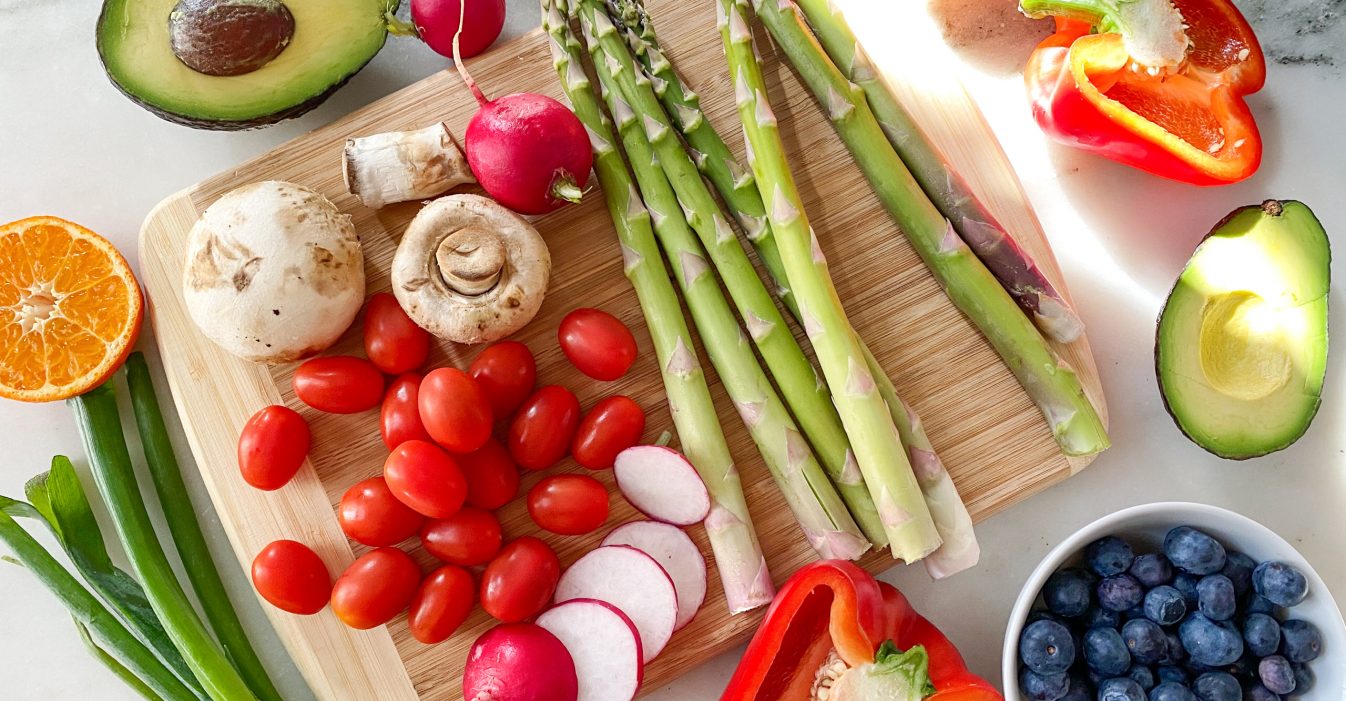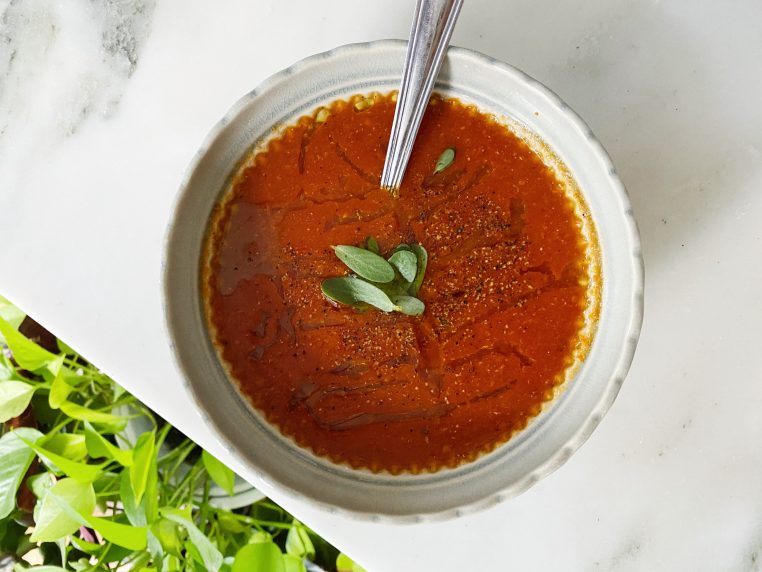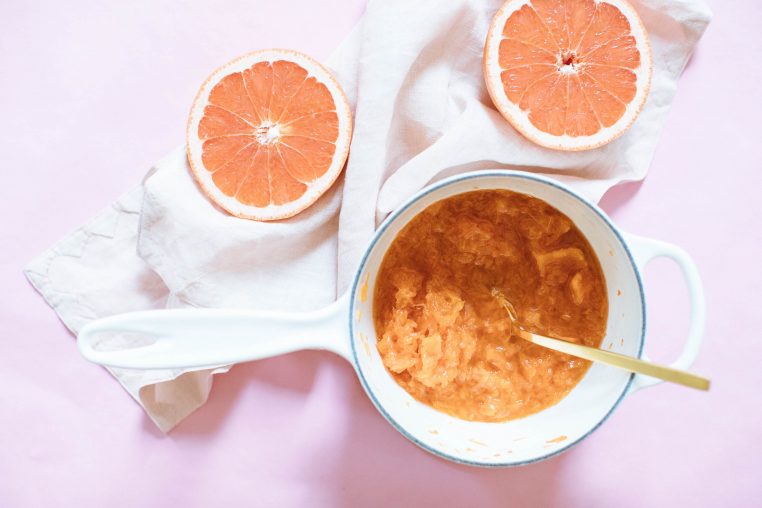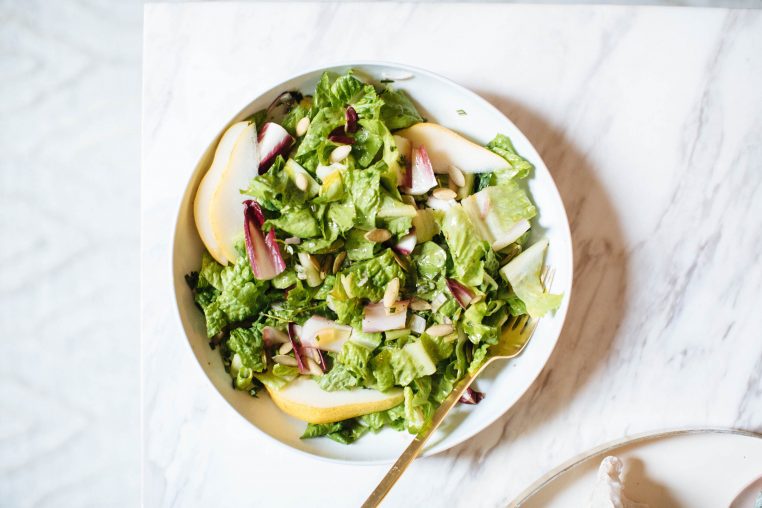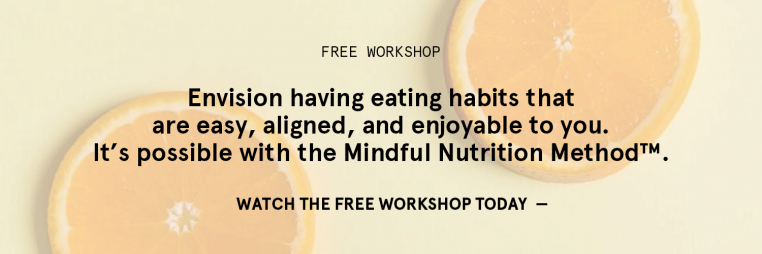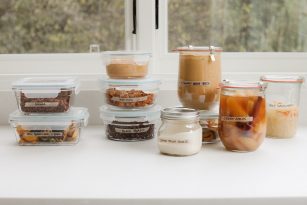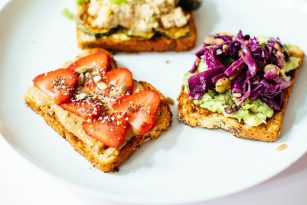The “eat the rainbow” philosophy is rooted in eating an abundance and variety of nutrient-rich, plant-based foods.
These foods help us get the wide variety of nutrients our body needs throughout the week.
Mother Nature provides us with so much nutritious and beautiful produce, and eating the rainbow is a simple visual reminder that allows you to appreciate all of these powerful foods that are available for you to enjoy.
By visualizing the rainbow as you eat throughout the week, it will help you to incorporate a variety of vitamins, minerals, and antioxidants into your diet.
Discover a few of the biggest benefits of each of the colors to keep top of mind along with tips for how you can begin integrating an eat the rainbow mentality into your weekly meals.
Why It’s Important to Eat The Rainbow
We’ve been hearing it since we were kids, “Eat the rainbow!”, “The more color the better!”, but what’s the reason for this?
The colors we see in our fruits, vegetables, and other whole foods, actually represent really powerful, important nutrients that are present. These are called phytonutrients!
Phytonutrients essentially help us to prevent and heal from disease. The best way to determine which phytonutrients we’re getting is to use the color of the fruit or vegetable we’re eating. Meaning, if we’re always just eating red fruits or vegetables, we’re only getting the phytonutrients that are associated with the red color.
Therefore, the more your plate, bowl, or overall diet resembles the rainbow, the more nutrients we’re getting overall! It’s a simple way to look at your shopping list, grocery cart, and weekly meals to gauge what am I missing?
One of the reasons we encourage you to eat more plant-based foods is because it makes it easier to incorporate more of these phytonutrients into your meals!
The Benefits of Each Color of Food
Red Food Benefits: anti-aging properties and improved heart health
The red foods in your diet are great sources of antioxidants. The phytonutrients present are flavonoids or carotenoids.
Both of these phytonutrients have been shown to help prevent sun damage when consumed consistently (1). Less sun damage means fewer signs of aging!
Additionally, their antioxidant status means they’re very anti-inflammatory, which can help to prevent chronic diseases and improve heart health as well (2).
Red foods: Red peppers, tomatoes, strawberries, raspberries, red apples, beets, red lentils, kidney beans, red rice, pomegranate
Recipes to try:
- Almond Butter Pink Beet Smoothie
- Red Lentil Daal With Squash and Acorn
- Creamy Vegan Roasted Tomato Soup
Orange Food Benefits: Improved eyesight
When you were growing up, how many times were you told to eat your carrots to improve your eyesight?
This common reference is actually based on science! Orange fruits and vegetables are packed with carotenoids, which are associated with promoting healthy vision.
Because of their antioxidant content as well, they too are known to help prevent certain cancers and eye diseases (3).
Orange foods: Carrots, orange peppers, butternut squash, pumpkin, oranges, nectarines, peaches, cantaloupe, mango, papaya
Recipes to try:
- Grapefruit Ginger Compote
- Roasted Carrots with a Maple Tahini Glaze
- Gluten-free Orange Chicken (Or Tofu)
Yellow Food Benefits: cancer prevention, anti-microbial, and anti-inflammatory properties
Turmeric has had its time in the light for quite a few years now, ever wonder why? Curcuminoids are to thank for this!
They’re the phytonutrients responsible for that potent bright yellow color found in turmeric as well as all the other yellow fruits and vegetables.
Because of their anti-cancer, microbial, and inflammatory properties, these yellow food items have been shown to help to heal those with Alzheimer’s disease, cancer, and even diabetes (4).
Yellow foods: Banana, yellow peppers, summer squash, delicata squash, yellow apples (ex. golden delicious), lemon, pineapple, corn, turmeric
Recipes to Try:
Green Food Benefits: digestion support and disease prevention
Eating plenty of greens increases your fiber intake, which supports your digestion on a daily basis. Additionally, they can also help decrease your chances of developing many disease states.
Once again, antioxidants are abundant here, which help to ward off disease or prevent disease in the first place.
Keep up your intake of greens to help keep both your cholesterol levels and chances of developing disease low!
Green foods: Leafy greens, green peppers, broccoli, zucchini, green beans, brussels sprouts, green cabbage, asparagus, green apples, cucumbers
Recipes to try:
- 5-Minute Spinach Smoothie
- Foundational Five Eggs, Beans, and Greens Nourish Meal
- Garden Green Soup
- How to Make Pesto with 5 Different Greens
- Stripped Green Juice
Blue and Purple Food Benefits: Improved heart health and cancer prevention
The blue and purple colors you see in an abundance of plant-foods are likely due to the flavonoids present.
These have been studied over the years in association with coronary heart disease prevention as well as anticancer activity.
By adding more blue and purple food items to your diet you can help to improve your heart health and reduce your chances of developing certain types of cancer.
Blue and purple foods: blueberries, grapes, blackberries, red cabbage, purple carrots, eggplant, purple potatoes, figs, plums, purple cauliflower, red leaf lettuce, purple peppers, red kale, raisins, purple cabbage
Recipes to try:
White and Brown Food Benefits: strengthen bones and reduce menopausal symptoms
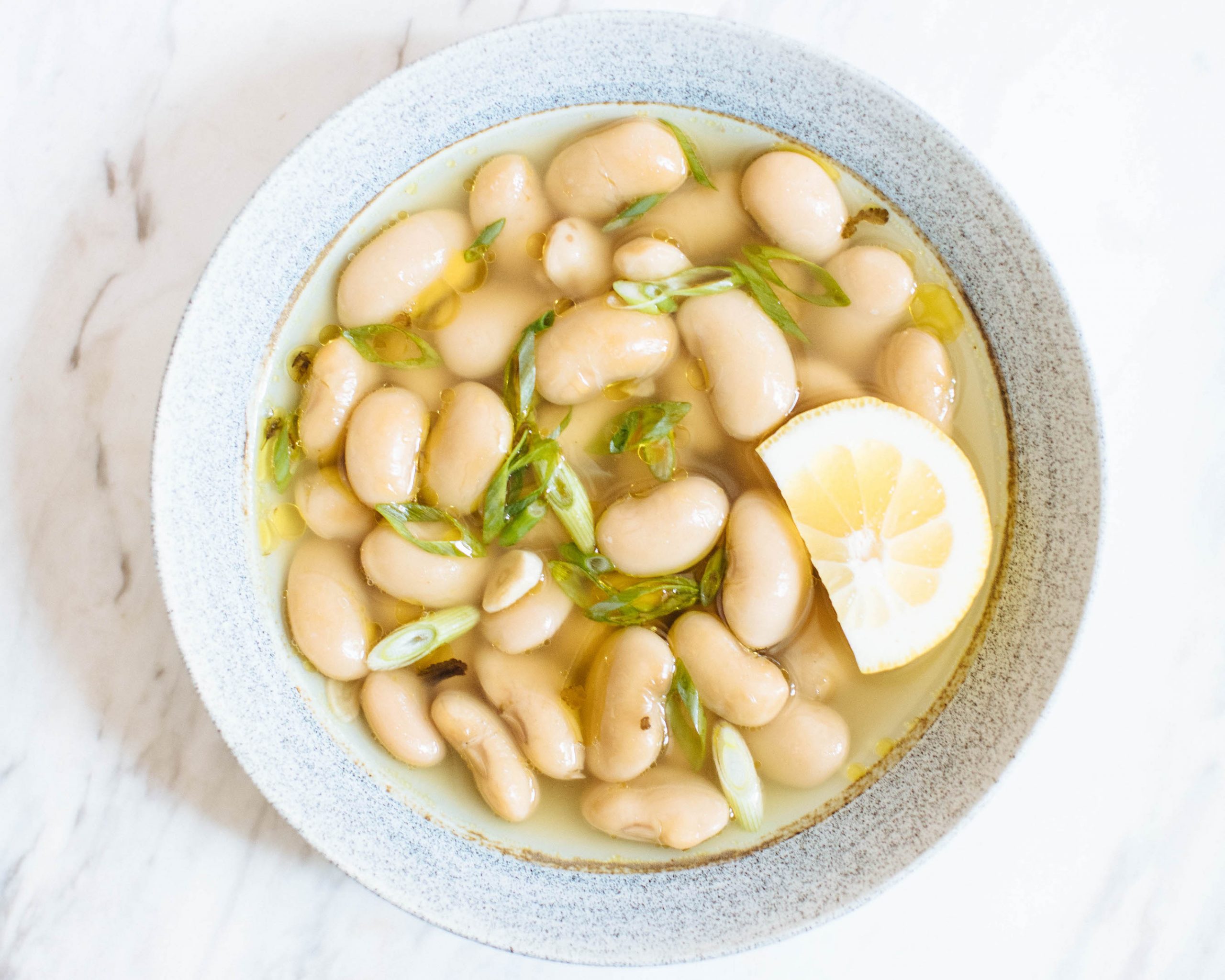
The phytonutrients lignan is present in many brown/white food items. Lignans have been shown to help reduce the chances of osteoporosis development over time.
Not only that, but their antioxidant properties have shown that they may help to reduce menopausal symptoms as well! (5)
Brown and white foods: Ground flax, lentils, jicama, ginger, garlic, onions, chickpeas, legumes, nuts, seeds
Recipes to try:
- White Bean Soup With The Best Broth Ever
- 1-pot Chickpea Curry with Turmeric Rice
- Lemony Chickpea Salad
- Raw-Nola
5 Tips to Eat the Rainbow Throughout the Week
Most of us have common foods and meals we rotate throughout our weeks and months so adding variety can seem like a daunting task. However, it is really a lot simpler than you might think.
Here are some simple strategies for incorporating more variety without getting overwhelmed.
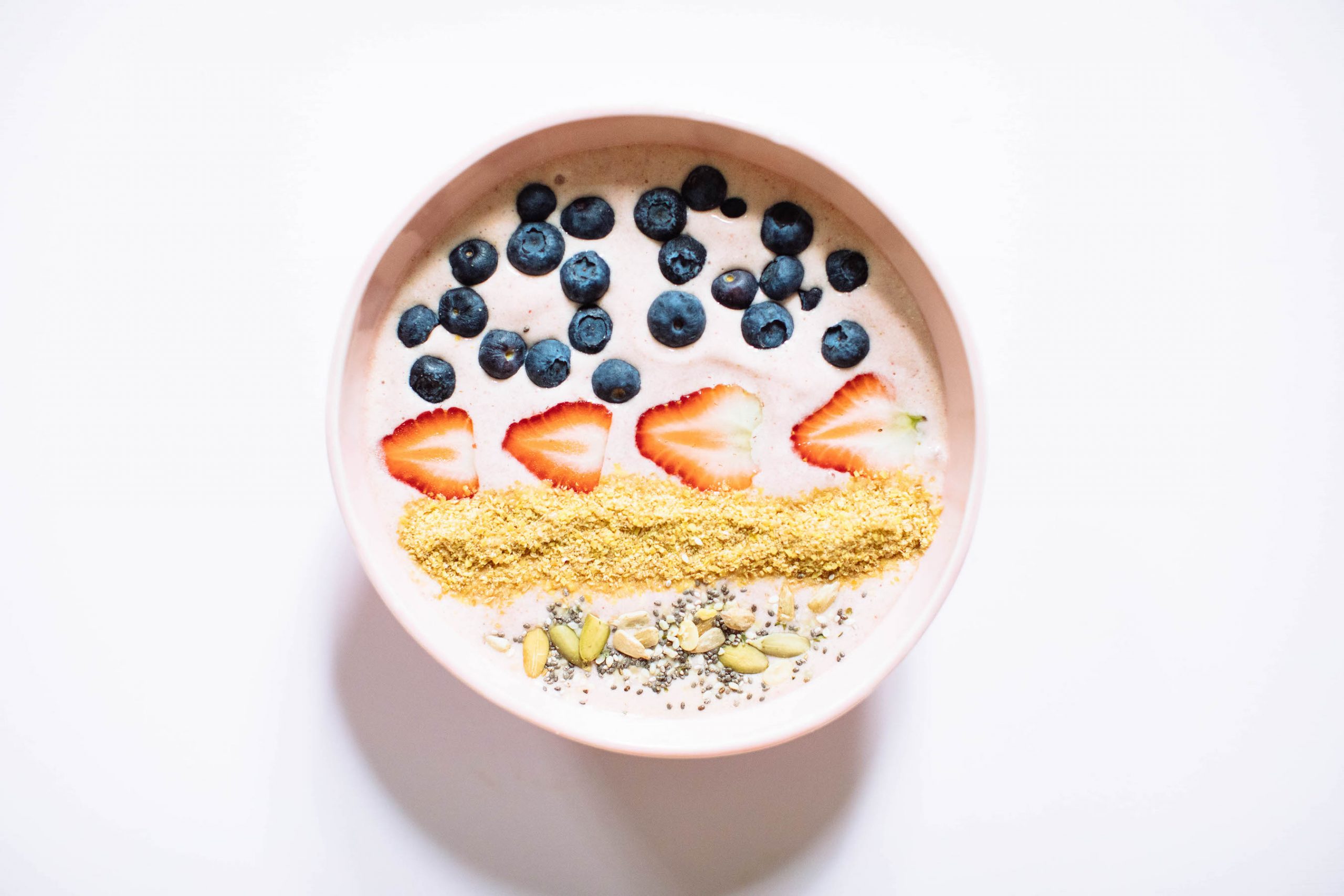
1. Keep Your Favorites on Hand
As you look through the list of foods for each color, you’ll likely be able to pick out a few favorites from each category. Maybe you already have those on hand each week, or maybe you realize you don’t typically purchase your favorite blue and purple foods regularly.
Identify a few favorites of each color that you can have on hand in the freezer, pantry, and fridge so it’s easy to think “what color am I missing today, and what do I have that I can add to my plate?”
2. Add Variety to Your Weekly Shopping List
Once you have a few of your favorites stocked, you can then layer on some variety week to week when you grocery shop. When you eat the rainbow, you want to think about both having variety among the different colors and also variety among the ingredients in each color too!
For example, if you normally grab spinach as your salad base, you can choose a different green than the week before, such as arugula, kale, or watercress (or a mix of multiple!).
Or if you normally add frozen broccoli or string beans to your dinner, maybe you pick up some artichokes or green peppers to change it up.
You can do the same with everything you purchase.
Now, if those are completely unenjoyable for you, don’t force it. But if you’re simply in the habit of buying the same staples and you also enjoy other options, give this tip a try!
3. Take Advantage of Produce That Comes in More Than One Color
Many fruits and veggies come in a variety of colors — think red, green, and yellow peppers, orange carrots and purple carrots, red apples and green apples!
One easy switch up with some of your favorites is simply to buy the other color option (or even better, buy a mix of the options)!
Here’s a great example. If you love carrots and hummus as a snack, you can get a variety of nutrients by having both purple and orange carrot options or one-week having orange and the next week having purple.
What’s great about this tip is that in many cases, it doesn’t drastically alter the flavor profile of whatever your eating. There might be a subtle difference, but overall, your favorite recipes or snacks will taste similar while bringing variety.
4. Utilize the Frozen Food Section When Necessary
Fresh fruits and vegetables are great, but don’t let their short shelf life prevent you from reaping the benefits of their consumption!
If you find that you’re unable to buy certain fruits or vegetables fresh, head to the frozen food section. The nutrition composition is just as good and they last twice as long. Just be sure to check out that ingredient list in the back — you just want to see the food item you’re purchasing, nothing else.
5. Make Eating the Rainbow Fun for Your Children Too!
Colors are a great way to engage young children and make eating well a little more fun. Our friend, fellow Registered Dietitian, and founder of Kids Eat in Color, Jennifer Anderson, is an expert on encouraging picky toddlers and young children to eat more fruits and veggies by making eating the rainbow fun and simple for both the parents and the children! Her Instagram is filled with easy lessons to learn!
Making “eat the rainbow” fun and enjoyable process and habit for the entire family will support your ability to follow through on this guideline too!

